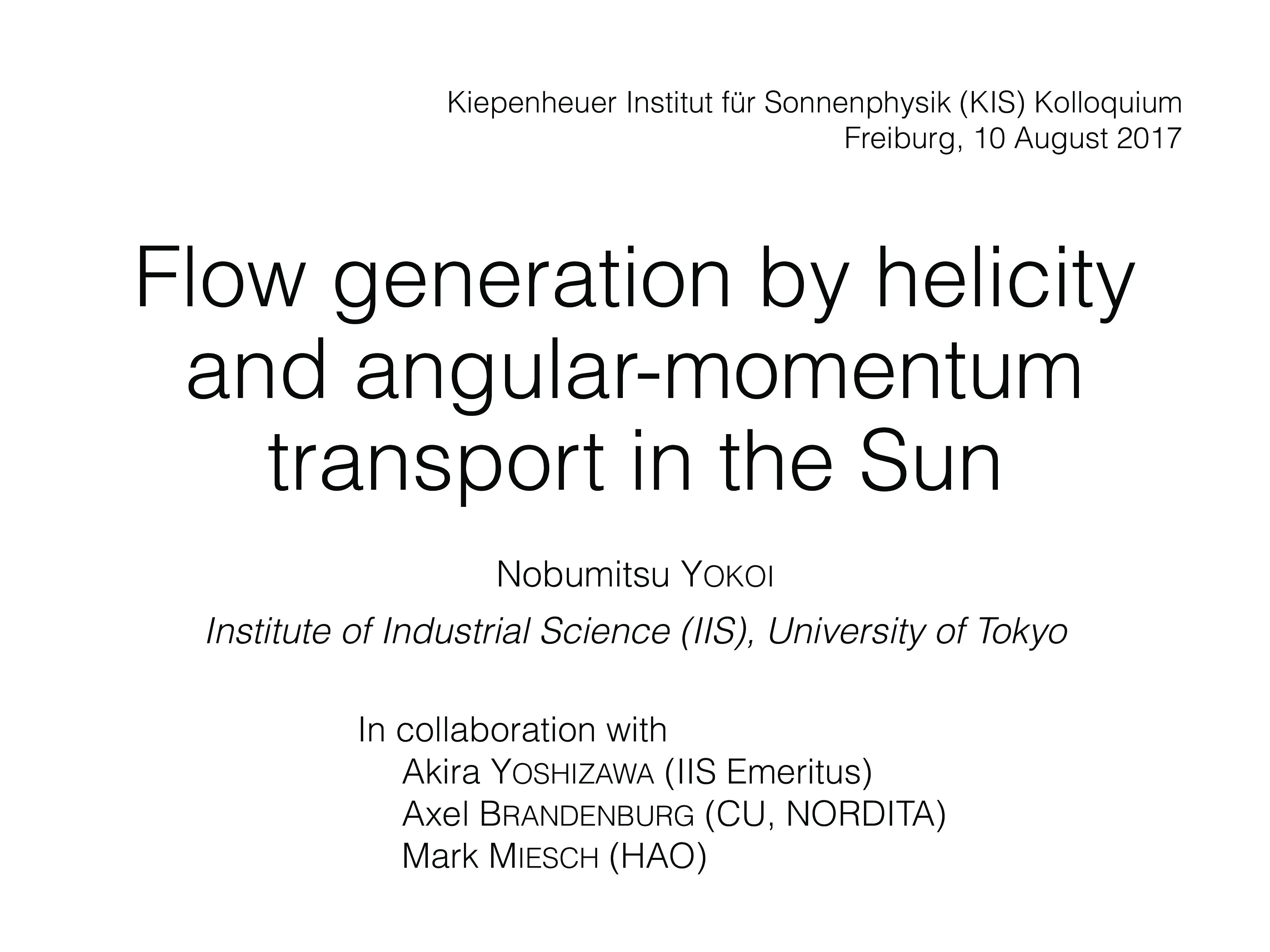Affiliation
University of Tokyo
Main category
Natural Sciences (Physics)
Abstract
Turbulent helicity (velocity–vorticity correlation) represents breaking mirror-symmetry in turbulence. With the aid of an analytical statistical theory for inhomogeneous turbulence, an expression of the Reynolds stress in non-mirror-symmetric turbulence is obtained from the fundamental hydrodynamic equations. It is shown that the helicity gradient enters the Reynolds stress as the coupling coefficient of the mean absolute vorticity Ω* (system rotation and mean relative vorticity). Using this analytical expression, a turbulence model (helicity model) is constructed, which is validated by direct numerical simulations (DNS) of rotating turbulence with helical forcing. This result implies that inhomogeneous turbulent helicity coupled with the mean absolute vorticity Ω* may induce a global flow in the direction of Ω*. This effect is generic in rotating turbulence with inhomogeneous helicity, and is expected to be relevant to several astro- and geo-physical flows, which include cyclones and solar convective motion. The angular-momentum transport in the solar convection zone is discussed from the view point of this helicity effect.
Further reading
Yokoi, N. & Yoshizawa, A. (1993) "Statistical analysis of the effects of helicity in inhomogeneous turbulence," Phys. Fluids A 5, 464
Yokoi, N. & Brandenburg, A. (2016) "Large-scale flow generation by inhomogeneous helicity," Phys. Rev. E 93, 033125
Do you have problems viewing the pdf-file? Download presentation
here
If the presentation contains inappropriate content, please
report the presentation. You will be redirected to the landing page.
